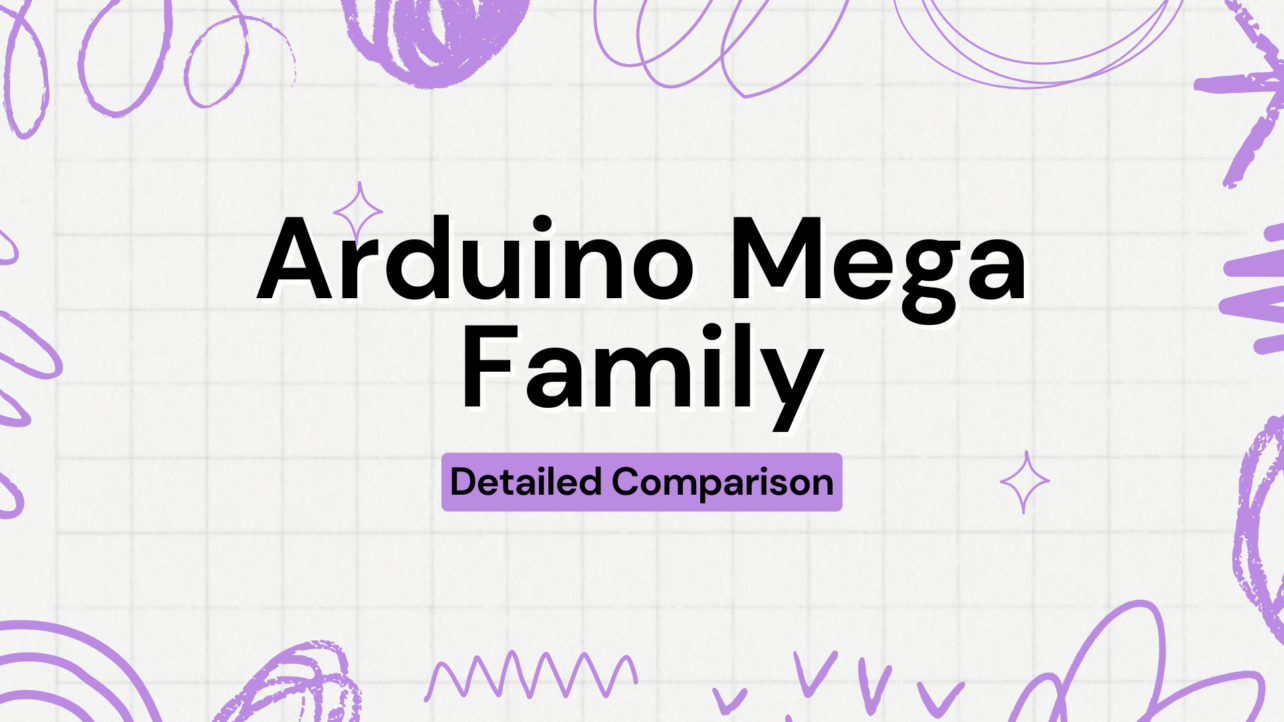Members of the Mechatronics Club at ENSA Kenitra and I have conducted case studies on every Arduino Mega board. I covered specifications from Arduino’s official page. Additionally, I included recommendations on use cases and difficulty levels, ranging from Beginners to Professionals . For more insights, I have discussed on Nano boards , Classic boards and MKR Boards as well.
Arduino Mega 2560 Rev3 Arduino Mega 2560 Rev3 Specification Details Microcontroller ATmega2560 Clock Speed 16 MHz Digital I/O Pins 54 (15 PWM) Analog Input Pins 16 PWM Channels 15 Flash Memory 256 KB SRAM 8 KB EEPROM 4 KB Operating Voltage 5V Connectivity None USB Ports 1 Special Features ICSP header, Reset button Shield Compatibility Yes Price (Europe/Africa) €42.00 Price (America/Asia/Oceania) $48.40
Use Case Description Recommendation Simple Projects Basic LED blinking, button-controlled lights, or simple sensor readings. Yes – Ideal for beginners with ample I/O.IoT Projects Home automation systems, weather stations, or remote monitoring with Wi-Fi. Yes – Supports Wi-Fi/Ethernet shields.Robotics Robot arms, autonomous vehicles, or line-following robots. Yes – High processing power and multiple I/O.Wearables Fitness trackers or smart clothing. No – Too large and power-hungry.Data Logging Environmental monitoring or logging temperature/humidity. Yes – Good memory and I/O for sensors.Advanced Prototyping Smart home systems or advanced robotics. Yes – Excellent for complex projects.
User Profile Description Beginners Yes Intermediate Users Yes Advanced Users Yes Professionals Yes
Arduino Due Arduino Due Specification Details Microcontroller AT91SAM3X8E Clock Speed 84 MHz Digital I/O Pins 54 (12 PWM) Analog Input Pins 12 PWM Channels 12 Flash Memory 512 KB SRAM 96 KB EEPROM None Operating Voltage 3.3V Connectivity None USB Ports 2 Special Features Dual DAC, CAN interface Shield Compatibility Yes Price (Europe/Africa) €42.00 Price (America/Asia/Oceania) $48.40
Use Case Description Recommendation Simple Projects Basic LED blinking, button-controlled lights, or simple sensor readings. Yes – Suitable for beginners with many I/O options.IoT Projects Home automation, remote monitoring, or smart devices using Wi-Fi. Yes – Supports USB host and various communication protocols.Robotics Advanced robotics projects, such as robotic arms or drones. Yes – High processing power and multiple I/O for sensors and motors.Wearables Fitness trackers or smart clothing. No – Size and power consumption are not ideal for wearables.Data Logging Environmental data collection, logging temperature, humidity, etc.. Yes – Ample memory and I/O for various sensors.Advanced Prototyping Complex systems like smart home setups or multi-sensor networks. Yes – Excellent for projects requiring extensive I/O and processing capabilities.
User Profile Description Beginners Yes Intermediate Users Yes Advanced Users Yes Professionals Yes
Arduino GIGA R1 WiFi Arduino GIGA R1 WiFi Specification Details Microcontroller STM32H747XI dual-core Cortex®-M7 + M4 Clock Speed 480 MHz (M7), 240 MHz (M4) Digital I/O Pins 70 (12 PWM) Analog Input Pins 18 PWM Channels 12 Flash Memory 2 MB SRAM 1 MB EEPROM None Operating Voltage 3.3V Connectivity WiFi, Bluetooth USB Ports 1 (Type-C) Special Features Dual-core, built-in IMU, secure element Shield Compatibility Yes Price (Europe/Africa) €68.70 Price (America/Asia/Oceania) $72.82
Use Case Description Recommendation Simple Projects Basic LED blinking, button-controlled lights, or simple sensor readings. Yes – Suitable for beginners with many I/O options.IoT Projects Home automation, remote monitoring, or smart devices using Wi-Fi. Yes – Onboard Wi-Fi and Bluetooth support.Robotics Advanced robotics projects, such as robotic arms or drones. Yes – High processing power and multiple I/O for sensors and motors.Wearables Fitness trackers or smart clothing. No – Size and power consumption are not ideal for wearables.Data Logging Environmental data collection, logging temperature, humidity, etc. Yes – Ample memory and I/O for various sensors.Advanced Prototyping Complex systems like smart home setups or multi-sensor networks. Yes – Excellent for projects requiring extensive I/O and processing capabilities.
User Profile Description Beginners Yes Intermediate Users Yes Advanced Users Yes Professionals Yes





2 comments